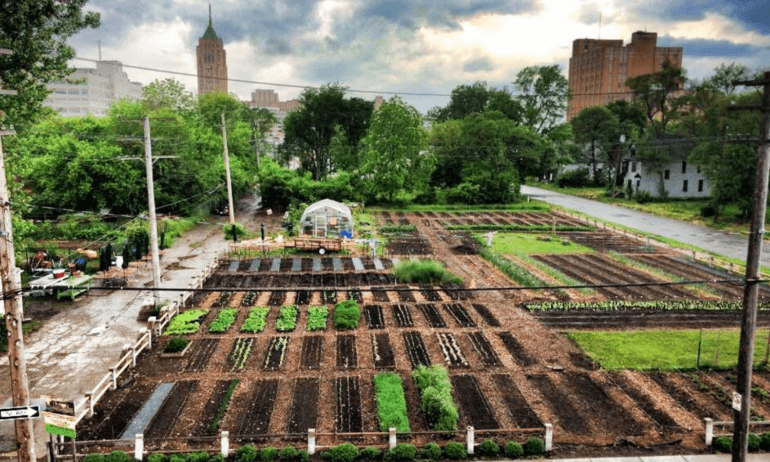City Blooming Can Be Fun For Anyone
City Blooming Can Be Fun For Anyone
Blog Article
The Best Guide To City Blooming
Table of ContentsNot known Facts About City BloomingWhat Does City Blooming Mean?Things about City BloomingCity Blooming Can Be Fun For AnyoneRumored Buzz on City Blooming
Intrigued in growing food for sale in the City of Chicago? Below is a listing of regularly asked concerns concerning the regulations and guidelines that growers should consider when planning a metropolitan farming task.
The zoning change does not modify any type of various other codes dealing with composting, building authorizations, acquiring or renting City owned residential property, business licenses or ecological contamination. There are existing codes that control these concerns and they stay completely effect and may be applicable to your project. Neighborhood gardens are normally possessed or handled by public entities, public companies or community-based companies and kept by volunteers.
Urban farms expand food that is meant to be offered, either on a not-for-profit or for-profit basis. Due to their industrial objective, metropolitan farms need a service certificate. Yes. A community garden is allowed to offer surplus produce that was expanded on site if the sales are accessory or subordinate to the garden's main function explained above.
The smart Trick of City Blooming That Nobody is Discussing
The amount of garden compost material can not exceed 25 cubic lawns at any kind of provided time according to the standards in 7-28-715 of the City's Municipal Code. Since the soil at a lot of brand-new garden websites requires amending, garden compost, dirt, timber chips, or various other materials can be acquired to create or boost the growing space.

If a building license is needed then the hoophouse will be thought about an accessory building. You can discover even more regarding the structure license demands by getting in touch with the Division of Buildings. The 25,000-square-foot size restriction is meant to stop a solitary neighborhood garden from controling a provided block or taking away from the block's existing domestic or business character.
The limitation does not relate to yards located in Public Open Space (POS) districts. Can there be even more than one community garden that is 25,000 square feet on a single block? Yes. The size restriction relates to individual gardens, not to private blocks. No. Secure fencing is not needed, nonetheless, gardens that have large auto parking locations might be required to set up secure fencing or various other landscaping attributes.
Get This Report about City Blooming
B1 & B2 areas require that all business use activities be performed inside. Is secure fencing required for urban ranches? Fencings may be called for, along with landscaping and screening, for certain vehicle parking locations and outdoor job or storage space locations depending on location and the specific activity taking place.
Yes. Urban farms need building permits and zoning approvals prior to building. Various other forms of city evaluation might be called for relying on specific frameworks, tasks, size, landscape design, licensing, public heath and stormwater monitoring problems. A lot of these requirements are identified in the project design or allowing process, however, the candidate may be accountable to independently identify specific licenses or permits that may be called for.
Yes. The kind of certificate is identified by what is happening at the site. The Department of Service Affairs and Customer Protection can assist identify the specific kind of company certificate that's called for. Yes. Off street parking is required for the majority of industrial tasks in Chicago. The called for number of parking spaces is based upon the number of staff members working on site and not the square footage of the growing area.
What Does City Blooming Do?

A city ranch can offer garden compost material produced on site, nevertheless, the operation should abide with the guidelines in 7-28-715 of the Chicago Municipal Code. Aquaponic systems are allowed inside your home on metropolitan farms in numerous zoning areas.
As much as five hives or colonies of honey may be maintained as an accessory use. Nonetheless, beekeepers must register with the Illinois Division of Farming. For additional information concerning the proposed zoning amendment you might get in touch with the Department of Real Estate and Economic Advancement, Bureau of Planning and Zoning at 312.744.8563.
Farming in cities and city areas An urban farm in Chicago. Urban agriculture describes various techniques of cultivating. https://www.openstreetmap.org/user/cityblooming, handling, and distributing food in urban areas. The term additionally applies to the location tasks of animal husbandry, aquaculture, beekeeping, read this post here and gardening in an urban context. Urban farming is identified from peri-urban agriculture, which occurs in backwoods at the side of residential areas.
Not known Details About City Blooming
, that look for to form social networks established on a shared ethos of nature and community holism. These networks can establish by means of official institutional support, coming to be incorporated into local community planning as a "shift community" movement for sustainable metropolitan advancement.
Some of the very first proof of city farming comes from Mesopotamia.
Report this page